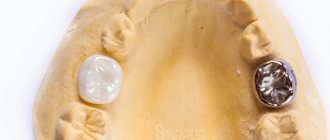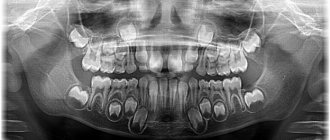Does your baby have ulcers behind his lower lip? Don't panic, most likely he has stomatitis.
Stomatitis is an inflammation of the oral mucosa. The reasons for its occurrence are very different: from mechanical damage in the mouth to viral infections. Often stomatitis on a child’s tongue is one of the symptoms of other diseases.
Children are more susceptible to stomatitis than adults. And there are reasons for this:
- Firstly, their immunity is weaker and fights diseases worse.
- Secondly, because of their age, children do not maintain hygiene: they put toys in their mouths and have the habit of sharing food and cutlery with each other. And washing their hands is not their favorite activity at all.
- Thirdly, during active games and falls, a child can receive microdamages to the oral cavity.
How do the symptoms of stomatitis manifest in children?
With stomatitis, the child feels pain in the mouth, and his body temperature rises. If you notice your baby is weak and refuses to eat, check him for other symptoms of stomatitis:
- redness in the mouth;
- bleeding gums;
- increased salivation;
- white or yellow plaque on the gums;
- bad breath;
- ulcers in the mouth.
Based on the symptoms, there are 3 types of stomatitis.
Catarrhal stomatitis
This type of disease mainly appears due to dental problems (most often catarrhal stomatitis provokes caries). It is characterized by redness, swelling in the mouth and inflammation of the gums.
Aphthous stomatitis in children
It got its name due to the fact that it causes aphthae to appear in the mouth. These are small round or oval ulcers, framed by a red border and with a yellowish coating in the center. As a rule, 2-3 spots appear, which are located on the lips, cheeks or tongue. They are accompanied by clear redness in the affected areas.
Herpetic stomatitis in children
Occurs when the immune system is very weakened. This may first happen when a mother stops breastfeeding her baby. During this period, antibodies from breast milk no longer help his immune system fight viruses.
Thus, in the process of developing its own defense, the child is exposed to the influence of many viruses, in particular herpes. Sometimes stomatitis occurs in a newborn if the child has recently been transferred to artificial nutrition.
The disease is identified by a multitude of blisters, which tend to quickly burst and form ulcers. Such symptoms can last up to a week and are accompanied by fever.
Causes of purulent-inflammatory pathologies
Gingivitis
Gingivitis in children occurs due to regular poor oral hygiene, accumulation of plaque, and deposition of stones. The situation is aggravated by factors such as crowded teeth, malocclusion, installed braces and other orthodontic structures.
Ulcers are formed due to untreated caries and improper oral care.
A fistula is the result of neglected infectious processes, a consequence of improper treatment of dental diseases.
What symptoms should parents be wary of?
The first signs of unhealthy gums are bad breath and bleeding when brushing your teeth.
Upon examination, you can see reddened areas above the teeth. Pus does not always provoke a rise in overall body temperature. Swelling of the face or pain in the initial stages is mild or absent.
Abscess
An abscess on the gum of a child is distinguished by the specificity of its symptoms - a feeling of local distension, pain, the formation of a tubercle, where decay products gradually accumulate in the form of a foul-smelling liquid. As the disease progresses, physical activity decreases and appetite disappears.
Treatment methods
Important! Self-treatment of a fistula on the gum of a child, or other diseases in the form of rinses, lotions, and ointments is unacceptable. This is dangerous due to such consequences as gumboil, loosening and loss of permanent teeth, and periodontal disease. In severe cases - transition to a chronic condition, decreased immunity, frequent viral infections of the body, partial or complete paralysis of the facial nerve.
Fistula
At the dental clinic "Podmoskovye" we take a professional approach to treatment, which includes the following stages:
- detailed diagnostics - examination, instrumental examination;
- drawing up a treatment plan in a clinical setting;
- Recommendations for caring for your oral cavity at home.
Only an integrated approach will preserve the health of the oral cavity until the dental system is fully formed.
Read more about our pediatric dentistry in the Pediatric Dentistry section
How to treat stomatitis in children: treatment depending on the type
Depending on the type of stomatitis, its treatment is carried out in different ways, but always under the supervision of a doctor.
- When treating catarrhal stomatitis, caries is eliminated and the mucous membrane is treated with an antiseptic. This type of stomatitis is subject to local treatment.
- If aphthous stomatitis is diagnosed in children, treatment occurs under the supervision of several doctors: an allergist, a gastroenterologist and a dentist. Antiseptic drugs are prescribed, such as Lugol, Hexoral in the form of sprays or rinsing with Iodinol solution. Aphthae are treated with blue, boric acid or soda. To strengthen the body, B vitamins and vitamin C are prescribed. And in the chronic form, immunological drugs are prescribed.
- Herpetic stomatitis in a child is treated therapeutically using local procedures. A small patient is prescribed ointments with an antiherpetic effect. The affected areas are treated with herbal infusions (often sage or chamomile). Treatment of stomatitis in older children with herbal infusions occurs in the form of rinses. Sometimes propolis infusion is used to effectively heal wounds.
If a child has severe herpetic stomatitis, treatment takes place in a hospital.
Treatment of stomatitis in children at home is possible
It is not always possible to identify and treat stomatitis at a mild stage. However, if you notice in time that your child has just begun to have an illness, you will need information on how to treat stomatitis at home.
But under no circumstances start treatment without consulting a pediatrician! He must determine an accurate diagnosis and prescribe the necessary medications.
Principles of treatment of childhood stomatitis
Doctors do not recommend treating childhood stomatitis at home, since in this case there is an extremely high probability of causing serious harm to the child’s health with drugs that are not intended for the treatment of children, especially for an unconfirmed diagnosis. At the clinic, the child will be examined by a dentist, make an accurate diagnosis and prescribe effective treatment. Treatment is often based on stages such as:
- isolation of a sick child from other children;
- disinfection of objects with which he came into contact;
- drawing up a suitable daily diet (it is important to minimize the amount of carbohydrates);
- ensuring oral hygiene to prevent secondary infections.
Features of treatment of different types of childhood stomatitis
There are several types of childhood stomatitis. Most often, specialists encounter the following:
- vesicular (viral) - appears due to the influence of bacteria; transparent bubbles form on the larynx, lips, cheeks, tongue;
- herpetic - the herpes virus enters the child’s mouth;
- aphthous - occurs due to allergic effects;
- candidiasis - appears due to the proliferation of Candida fungi in the mouth.
Any type of stomatitis should be treated under the supervision of a doctor. The treatment process for each type of disease has its own characteristics.
If it is important for you that the treatment of stomatitis has a positive effect, then you can contact the Moscow Region clinic. For your child, our specialists will develop the most effective treatment plan and select the most appropriate medications. You can find a complete list of the cost of services in the pediatric dentistry department. We are always happy to be useful to each member of your family!
How to treat stomatitis in children at home
As you already understood, in order to cure childhood stomatitis, antiseptics are mainly prescribed.
- Decoctions of chamomile and calendula (1 tablespoon of herbs per glass of boiling water) are well suited as natural antiseptics. The child should rinse his mouth with this solution twice a day.
- To deal with a single pustule, apply a piece of aloe leaf to it. If there are several abscesses, let the child chew a whole leaf.
- Mouth ulcers are lubricated with a one percent solution of brilliant green. This way they heal faster.
- To speed up the treatment of stomatitis in infants, it is recommended to wipe the gums with gauze soaked in a soda solution. The structure of gauze is very convenient for cleaning gums, removing harmful plaque from them.
We treat stomatitis correctly so that the disease does not return
Prevention is the best tactic to prevent disease.
To prevent stomatitis from returning in children and for the treatment to be effective, you and your baby will need to follow simple but important rules.
- The most stringent condition for the prevention of stomatitis remains personal hygiene. Stomatitis is popularly known as the “disease of dirty hands,” and for good reason. It is truly contagious: transmitted through household items and saliva.
- If your child has stomatitis, rinse his dishes with boiling water, try to reduce his contact with other children.
- It is necessary to instill in your child an understanding of how important hygiene is from an early age. To do this, first of all, set your example. Wash your hands and brush your teeth together, gradually teaching your child to do this without your reminder. Make it a tradition to come to the doctor for a checkup with the whole family.
- To prevent stomatitis in infants, it is necessary, along with bathing, to regularly wipe the mouth and rinse.
- It is also important to strengthen the child's immunity. Food full of vitamins and walks in the fresh air are indispensable helpers in this. This is also important because the child is developing: his body requires a nutritious diet and physical activity.
- React to signs of stomatitis in children in a timely manner and without panic. If you suspect that your child has stomatitis in his mouth, take him to the doctor for an examination. This way you can protect your nerves and the health of your child.
Let your children learn about stomatitis only from the article!
Main indicators of the disease
Stomatitis in the mouth of a baby manifests itself as follows:
- excessive moodiness, tearfulness;
- increased body temperature (from mild to severe);
- formation of whitish plaque in the mouth;
- the appearance of small blisters resembling ulcers;
- redness of the mucous membrane around the rash, increased swelling;
- difficulty swallowing;
- loss of appetite;
- diarrhea, nausea.
It is not at all necessary that all the manifestations occur at once: sometimes one or several symptoms are enough for the pediatrician to make such a diagnosis and select a course of treatment.
Causes of stomatitis
Stomatitis on the tongue of a baby or in another part of the mucous membrane most often appears due to its fragile immunity, which had to deal with harmful environmental factors.
The causes of stomatitis in infants include the following:
- weakened immune system;
- fungal, viral or bacterial infection;
- disruption of the endocrine system;
- failure to comply with hygiene standards;
- microtrauma in the oral area;
- allergy;
- lack of vitamins and essential minerals.
Among the main causative agents of stomatitis in infants, the most common are:
- Candida fungus, popularly called thrush. It may appear in the womb, transmitted from the mother, or appear as a result of the influence of external stimuli;
- virus;
- drug or food allergies;
- genetic disposition.









